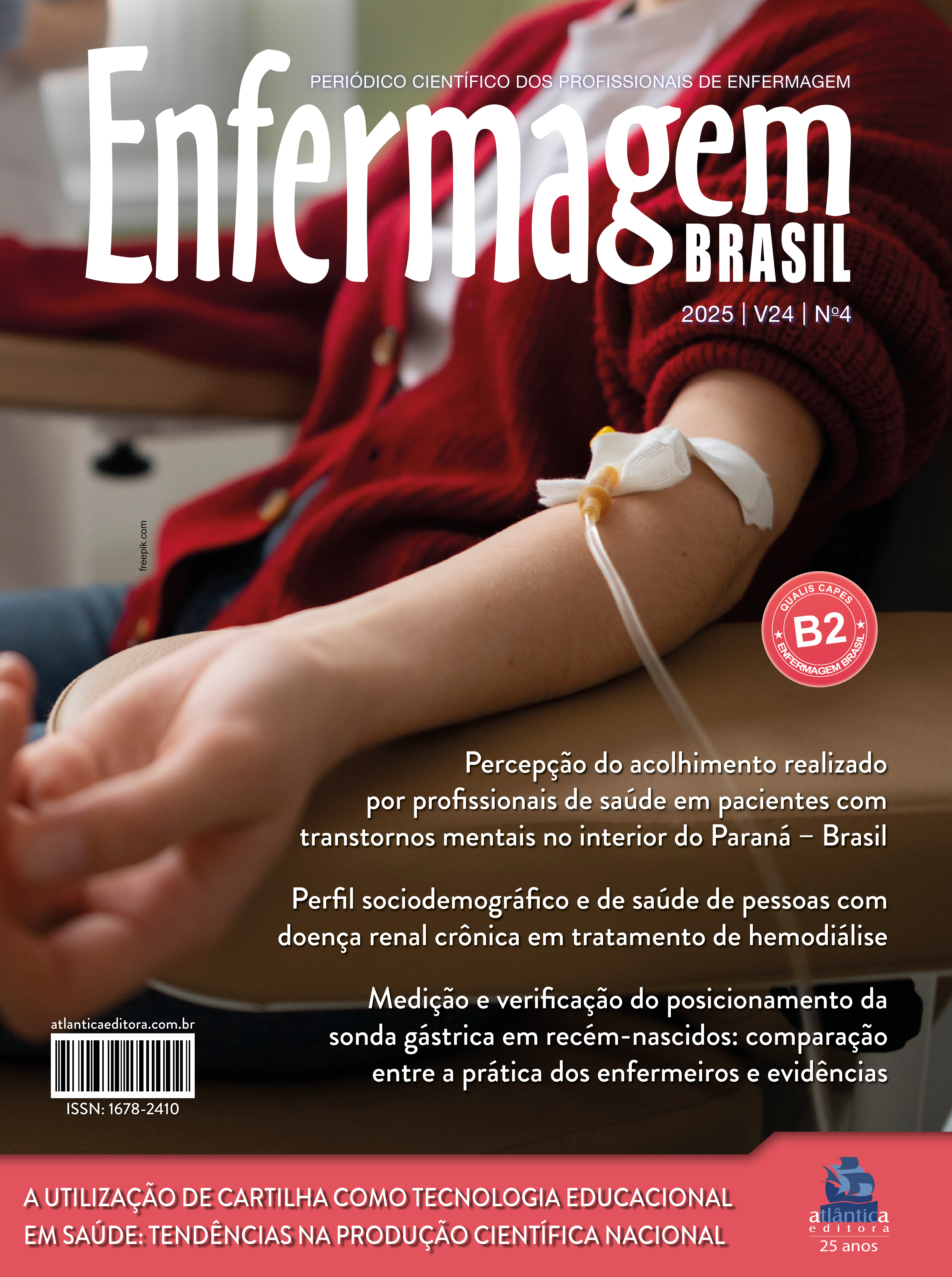La terapia de presión negativa en el tratamiento de heridas complejas: contribuciones y desafíos para la práctica de enfermería
DOI:
https://doi.org/10.62827/eb.v24i4.4083Palabras clave:
Terapia de Presión Negativa para Heridas; Heridas y Lesiones; Enfermería.Resumen
Introducción: El cuidado de heridas complejas representa un desafío creciente para los sistemas de salud a nivel mundial. Varias innovaciones tecnológicas han demostrado ser efectivas en el tratamiento de heridas complejas, incluyendo la terapia de presión negativa para heridas (NPWT). Objetivo: Describir las contribuciones y los desafíos de la terapia de presión negativa para heridas (NPWT) en el tratamiento de heridas complejas, con énfasis en el rol del personal de enfermería. Métodos: Se realizó una revisión narrativa de la literatura entre febrero y junio de 2025, utilizando las bases de datos Scientific Electronic Library Online (SciELO), Literatura Latinoamericana y del Caribe en Ciencias de la Salud (LILACS) y el Medical Literature Analysis and Retrieval System Online a través de PubMed, cubriendo el período de 1997 a 2024. Resultados: Se identificaron 38 estudios y 12 artículos, y cuatro documentos institucionales cumplieron con los criterios establecidos, totalizando 16 fuentes de datos. Los hallazgos demostraron que la NPWT proporciona beneficios significativos, como la reducción del exudado, la estimulación de la formación de tejido de granulación, la prevención de infecciones y la aceleración de la cicatrización. Conclusión: La NPT tiene un impacto positivo en la evolución de las heridas complejas, fortaleciendo el papel de enfermería como agente central en la aplicación y seguimiento de la técnica.
Referencias
Oliveira CM, Silva LG, Amorim ME. Prevenção e tratamento de paciente com lesão por pressão em unidade de terapia intensiva. REASE [Internet]. 2023 [cited 2025 Ago 15];9(10):4294-31. Available from: https://periodicorease.pro.br/rease/article/view/12329. doi: https://doi.org/10.51891/rease.v9i10.12329
Comissão Nacional de Incorporação de Tecnologias no SUS (BR). Relatório de recomendação: terapia por pressão subatmosférica. Brasília: Ministério da Saúde; 2014.
Orgill DP, Manders EK, Sumpio BE, Lee RC, Attinger CE, Gurtner GC et al. The mechanisms of action of vacuum assisted closure: more to learn. Surgery [Internet]. 2009 Jul [cited 2025 Aug 16];146(1):40-51. Available from: https://www.surgjournal.com/article/S0039-6060(09)00079-8/abstract doi:10.1016/j.surg.2009.02.002
Morykwas MJ, Argenta LC, Shelton Brown EI, McGuirt W. Vacuum assisted closure: a new method for wound control and treatment: animal studies and basic foundation. Ann Plast Surg [Internet]. 1997 Jun [cited 2025 Aug 16];38(6):553-62. Available from: https://journals.lww.com/annalsplasticsurgery/abstract/1997/06000/vacuum_assisted_closure__a_new_method_for_wound.1.aspx. Doi:10.1097/00000637-199706000-00001
Saxena V, Hwang CW, Huang S, Eichbaum Q, Ingber D, Orgill DP. Vacuum assisted closure: microdeformations of wounds and cell proliferation. Plast Reconstr Surg [Internet]. 2004[cited 2025 Aug 16];114(5):1086–96. Available from: https://pubmed.ncbi.nlm.nih.gov/15371845. doi:10.1097/01.PRS.0000135330.51408.97
Maillard H. Negative pressure therapy: NPT. Ann Dermatol Venereol [Internet]. 2015 [cited 2025 Aug 16];142(8–9):498–501. Available from: https://pubmed.ncbi.nlm.nih.gov/26249531. doi:10.1016/j.annder.2015.06.008
Orgill DP, Bayer LR. Negative pressure wound therapy: past, present and future. Int Wound J[Internet]. 2013[cited 2025 Aug 16];10 Suppl 1:15–19. Available from: https://pubmed.ncbi.nlm.nih.gov/24251839. doi:10.1111/iwj.12170
Lalezari S, Lee CJ, Borovikova AA, Banyard DA, Paydar KZ, Wirth GA et al. Deconstructing negative pressure wound therapy. Int Wound J[Internet]. 2017[cited 2025 Aug 16];14(4):649–657. Available from: https://pubmed.ncbi.nlm.nih.gov/27681204. doi:10.1111/iwj.12658.
Agência Nacional de Saúde Suplementar (BR). Resolução Normativa nº 465, de 24 de fevereiro de 2021. Diário Oficial da União. 2021 fev 25;Seção 1:67.
Conselho Federal de Enfermagem (BR). Resolução nº 567, de 29 de janeiro de 2018. Dispõe sobre a atuação do enfermeiro no tratamento de feridas. Diário Oficial da União. 2018 fev 5; Seção 1:115.
Ministério da Saúde (BR). Diretrizes de atenção à pessoa com feridas. Brasília: Ministério da Saúde; 2019.
Nundy S, Kakar A, Bhutta ZA. How to do a review of the literature?. In: How to Practice Academic Medicine and Publish from Developing Countries? Singapore: Springer [Internet]; 2022 [cited 2025 Aug 16]. Available from: https://link.springer.com/chapter/10.1007/978-981-16-5248-6_18. Doi:10.1007/978-981-16-5248-6_18
Oliveira FF, Francisco MFR, Santos TCB, Sokem JAS, Popim RC. Significado de espiritualidade e o sentido da vida para pessoa com ferida de difícil cicatrização. Rev Enferm UERJ[Internet]. 2024 [cited 2025 Aug 16];32:e80250. Available from: https://www.e-publicacoes.uerj.br/index.php/enfermagemuerj/article/view/80250. doi:10.12957/reuerj.2024.80250
Shah A, Sumpio BJ, Tsay C, Swallow M, Dash B, Thorn SL et al. Incisional negative pressure wound therapy augments perfusion and improves wound healing in a swine model pilot study. Ann Plast Surg [Internet]. 2019 [cited 2025 Aug 16];82(4S): S222–S227. Available from: https://journals.lww.com/annalsplasticsurgery/abstract/2019/04003/incisional_negative_pressure_wound_therapy.13.aspx. doi: 10.1097/SAP.0000000000001842
Nam D, Sershon RA, Levine BR, Della Valle CJ. The use of closed incision negative pressure wound therapy in orthopaedic surgery. J Am Acad Orthop Surg [Internet]. 2018 [cited 2025 Aug 16];26(9):295–302. Available from: https://journals.lww.com/jaaos/abstract/2018/05010/the_use_of_closed_incision_negative_pressure_wound.1.aspx. doi:10.5435/JAAOS-D-17-00054
Erba P, Ogawa R, Ackermann M, Adini A, Miele LF, Dastouri P et al. Angiogenesis in wounds treated by microdeformational wound therapy. Ann Surg [Internet]. 2011 [cited 2025 Aug 16];253(2):402–9. Available from: https://journals.lww.com/annalsofsurgery/citation/2011/02000/angiogenesis_in_wounds_treated_by.32.aspx. doi:10.1097/SLA.0b013e31820563a8
Kairinos N, Solomons M, Hudson DA. The paradox of negative pressure wound therapy–in vitro studies. J Plast Reconstr Aesthet Surg[Internet]. 2010 [cited 2025 Aug 16];63(1):174–9. Available from: https://www.sciencedirect.com/science/article/abs/pii/S1748681508009339. doi:10.1016/j.bjps.2008.08.037
Cavalcante IM, da Silva EP. Importância da terapia por pressão negativa na prática clínica de enfermagem. REAS[Internet]. 2021[cited 2025 Aug 16];13(2):e6115. Available from: https://acervomais.com.br/index.php/saude/article/view/6115. doi:10.25248/reas.e6115.2021
Descargas
Publicado
Número
Sección
Licencia
Derechos de autor 2025 Vanessa Schiavo, Reginaldo Oliveira (Autor)

Esta obra está bajo una licencia internacional Creative Commons Atribución 4.0.
Autores que publicam nesta revista concordam com os seguintes termos:
Autores mantém os direitos autorais e concedem à revista o direito de primeira publicação, com o trabalho simultaneamente licenciado sob a Licença Creative Commons Attribution 4.0 que permite o compartilhamento do trabalho com reconhecimento da autoria e publicação inicial nesta revista.
Autores têm autorização para distribuição não-exclusiva da versão do trabalho publicada nesta revista (ex.: publicar em repositório institucional ou como capítulo de livro), com reconhecimento de autoria e publicação inicial nesta revista.


